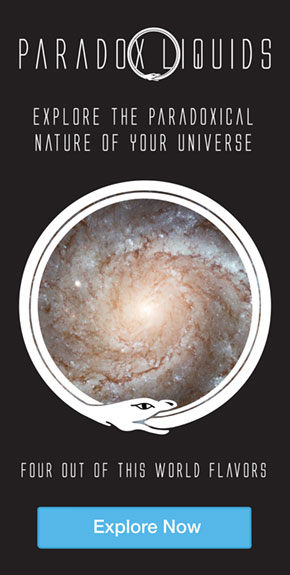
Nicotine can be found in cauliflower, tomatoes, potatoes, eggplants, and several other vegetables — not just tobacco. Nicotine is exactly the same regardless of whether it’s extracted from tobacco leaves or another source.
As the U.S. Food and Drug Administration (FDA) considers regulations on e-cigarettes, a major question is how it will approach taxing and regulating e-liquid. At the moment, the FDA and many Americans view e-liquid as a tobacco product. But this viewpoint is misleading, and potentially very harmful to vaping, which has been an important tool in helping smokers quit.
Nicotine can be found in cauliflower, tomatoes, potatoes, eggplants, and several other vegetables. The main reason it is usually extracted from tobacco is because there is more nicotine present in tobacco leaves than in other sources. If it were more cost-effective, companies would extract nicotine from eggplant or tomatoes, or simply synthesize it. But the nicotine liquid used in an electronic cigarette is pure. Even if nicotine is derived from tobacco, it is identical to nicotine from other sources and, once extracted, no longer has anything to do with the tobacco leaf it came from.
How Is Nicotine Different Than Most Tobacco Products?
What makes nicotine itself different from what is usually considered a tobacco product? A lot. Pure nicotine has virtually none of the cancer-causing effects of tobacco products like chew or traditional cigarettes. Cigarette smoke contains no fewer than 68 harmful carcinogens, including the tar produced by combustion.
Nicotine is close to caffeine in terms of its effects on the body. It has not been shown to be carcinogenic or seriously harmful to the body, and it provides minor benefits to memory and cognitive function.
Besides nicotine, there are several other components in e-liquid. These include vegetable glycerin, propylene glycol, and ester-based flavorings. There have been more than 100 peer-reviewed studies of e-liquid and the vapor it produces. It has been demonstrated so far that there are extremely low amounts of potentially harmful elements in e-liquid. So low, in fact, that they are negligible.
In terms of its effects on the human body, e-liquid bears little resemblance to what typically is known as a “tobacco product.”
E-Cigarettes and the FDA
So far, though, the FDA has been trying to regulate e-liquid the same way it does all tobacco products, which would mean requiring e-liquid companies to potentially pay millions of dollars in fees and making them undergo a rigid, lengthy application process for selling their products. This would force many e-liquid companies out of business, leaving only e-liquid made by the massively wealthy big-three tobacco companies.
According to the FDA, it has “issued a proposed rule that would extend the agency’s tobacco authority to cover additional products that meet the legal definition of a tobacco product, such as e-cigarettes.”
Besides the fact that pure nicotine is not tobacco, classifying e-cigarette devices as tobacco products is problematic. Most electronic cigarettes these days are merely a vessel for e-liquid and don’t contain e-liquid when purchased. Some people vape e-liquid that contains no nicotine at all, only flavorings, vegetable glycerin, and propylene glycol. To call this a tobacco product and tax it like one is ludicrous.
U.S. Rep Andy Harris (R-Md.) said, “I think most people realize that [e-cigarettes] are less dangerous than cigarettes, and yet we’re subjecting them to a higher level of regulation.” On the other hand, Rep. Nita Lowey (D-N.Y.) has said that barring the FDA from treating e-liquid as a tobacco product “is nothing short of a giveaway to the tobacco industry.”
But Rep. Lowey has it backwards. RJ Reynolds can easily afford the fees and the time and the resources, and welcome these regulations as a way to limit the competition severely. They’re producing sub-par e-liquid and sub-par e-cigarettes that won’t help nearly as many people quit smoking. It’s in Big Tobacco’s best interest to either keep people vaping on their cheap e-cigarettes with their e-liquid, or to send people back to smoking. It’s the smaller companies in the industry – those producing effective vaping devices and high-quality, clean and pure e-liquid – that would be forced to close.
This is why it’s important that our representatives in Congress recognize that e-cigarettes do not actually contain tobacco. Once nicotine is isolated, it is different than tobacco. If we accept that e-cigarettes are like any other tobacco product and quash the quality independent e-cig market, we may send millions of vapers back to smoking.
If you’d like to tell Congress that e-cigarettes should not be regulated like tobacco products, we encourage you to join over 30,000 vapers and supporters in signing this Change.org petition. Let your voice be heard!
Image by McKay Savage from London, UK [CC BY 2.0], via Wikimedia Commons.

